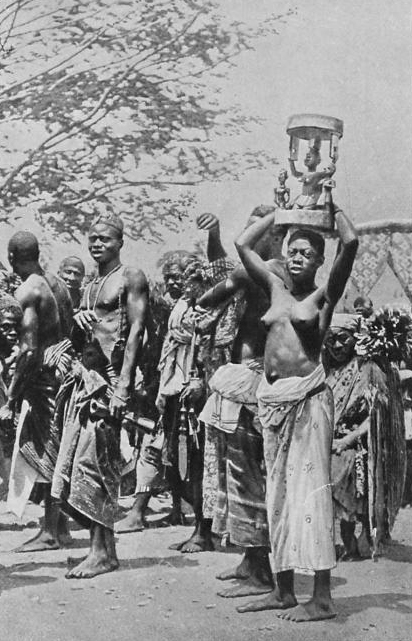Adapted from: FINNEGAN, Ruth. « Bibliography ». Oral Literature in Africa, Open Book Publishers, 2012, p. 509-542: https://books.openedition.org/obp/1210 (see also: https://www.ruthhfinnegan.com/oral-literature-in-africa)
- ROGER, J.-F., Fables sénégalaises recueillies dans l’Ouolof, Paris, 1828. https://gallica.bnf.fr/ark:/12148/bpt6k1063917
- CASALIS, E., Études sur la langue sechuana, Paris, 1841. https://archive.org/details/bub_gb_x_lu6vohU1IC
- CHERBONNEAU, A., Essai sur la littérature arabe au Soudan d’après le ‘Tek-milet-ed-dibadje’ d’Ahmed-Baba le Tombouctien, Constantine, 1856. https://www.digitale-sammlungen.de/view/bsb10249144?page=%2C1
- BERENGER-FERAUD, L. J. B., Recueil de contes populaires de la Sénégambie, Paris, 1885. https://archive.org/details/recueildecontesp00bere
- JACOTTET, E., Contes Populaires des Bassoutos, Paris, 1895. https://archive.org/details/8ZSUP309_20
- JUNOD, H. A., Les Chants et les contes des Ba-Ronga de la baie de Delagoa, Lausanne, 1897. https://archive.org/details/leschantsetlesco00juno
- JUNOD, H. A., Nouveaux Contes ronga transcrits dans la langue indigène avec traduction français, Neuchâtel, 1898. https://archive.org/details/nouveauxcontesro00neuc
- DELAFOSSE, M., Essai de manuel de la langue agni, Paris, 1900. https://gallica.bnf.fr/ark:/12148/bpt6k6352679c
- BASSET, R., Contes populaires d’Afrique, Paris: E. Guilmoto, 1903. https://archive.org/details/leslittratures47pariuoft
- MONTEIL, C., Contes soudanais, Paris, 1905. https://archive.org/search?query=Contes+soudanais+monteil
- DE CLERCQ, A., ‘Quelques légendes des Bena Kanioka’, Anthropos 4, 1909. https://archive.org/details/anthropos_1909_4/page/71/mode/1up
- VAN GENNEP, La Formation des légendes, Paris, 1910. https://archive.org/details/laformationdesl00genngoog
- DE CLERCQ, A., ‘Légendes des Mongwandi’, Revue congolaise 2, 1912. https://gallica.bnf.fr/ark:/12148/bpt6k995970k/f377.item
- DELAFOSSE, M., Haut-Sénégal-Niger, Vol. 3, Paris, 1912. https://gallica.bnf.fr/ark:/12148/bpt6k103565h
- DELAFOSSE, M., Traditions historiques et légendaires du Soudan occidental, Paris, 1913. https://gallica.bnf.fr/ark:/12148/bpt6k54569788
- DELAFOSSE, M., and GADEN, H., Chroniques du Foûta sénégalais; traduites de deux manuscripts inédits…, Paris, 1913. https://archive.org/details/chroniquesdufo00sir
- EQUILBECQ, F. V., Essai sur la littérature merveilleuse des noirs, suivi de contes indigènes de l’Ouest africain français, 3 vols, Paris, 1913–16. Vol. 1: https://gallica.bnf.fr/ark:/12148/bpt6k754508.
Vol. 2 & 3 “Aux lueurs des feux de la veillée” not digitised? https://catalogue.bnf.fr/ark:/12148/cb32079494j - HOUDAS, O., and DELAFOSSE, M., Tarikh el-fettach, par Mahmoûd Káti, Paris, 1913. https://gallica.bnf.fr/ark:/12148/bpt6k5439466q
- DELAFOSSE, M., ‘Contribution à l’étude du théâtre chez les noirs’, Annuaire et mémoires du Comité d’études historiques et scientifiques de l’Afrique occidentale française, 1916. https://gallica.bnf.fr/ark:/12148/bpt6k9732843g/f356.image
- GADEN, H., ‘Un chant de guerre toucouleur’, Annuaire et mémoires du Comité d’études historiques et scientifiques de l’Afrique occidentale française 1, 1916. https://gallica.bnf.fr/ark:/12148/bpt6k9732843g/f353.image
- CENDRARS, B., Anthologie nègre, Paris, 1921. https://archive.org/details/anthologiengre00cenduoft
- HUREL, E., La poésie chez les Primitifs ou contes, fables, récits et proverbes du Rwanda (Lac Kivu), Bruxelles, 1922.
Digitisation not found - LABOURET, H., ‘Langage tambouriné et sifflé’, Bulletin du Comité d’études historiques et scientifiques de l’Afrique occidentale française 6, 1923. https://gallica.bnf.fr/ark:/12148/bpt6k1227372/f140.item
- TRAVÉLÉ, M., Proverbes et contes bambara : accompagnés d’une traduction française et précédés d’un abrégé de droit coutumier Bambara et Malinké, Paris, 1923. Digitisation not found
- JOUSSE, M., ‘Études de psychologie linguistique. Le Style oral rythmique et mnémotechnique chez les verbo-moteurs’, Archives de philosophie, Paris, Volume 2, Cahier 4, 1925. http://classiques.uqac.ca/classiques/jousse_marcel/Style_oral_verbo_moteurs/style_oral.html
- FOUCAULD, Charles de, Poésies touarègues, dialecte de l’Ahaggar, 2 vols, Paris, 1925–30. Digitisation not found
- TANGHE, J., ‘Chansons de pagayeurs’, Bulletin of the School of Oriental studies 4, 1926/8. https://archive.org/details/in.gov.ignca.25163/page/827/mode/1up
- TRAUTMANN, R., La littérature populaire à la Côte des Esclaves : contes, proverbes, devinettes, Travaux et mémoires de l’Institut d’ethnologie 4, 1927. Digitisation not found
- LABOURET, H., and TRAVÉLÉ, M., ‘Le théâtre mandingue, Soudan français’, Africa / International African Institute, London, 1, 1928. https://www.jstor.org/stable/1155864
- CÉSARD, E., ‘Proverbes et contes haya’, Anthropos 23, 1928; 24, 1929. https://archive.org/details/anthropos_may-august-1928_23_3-4/page/494/mode/1up
- PROUTEAUX, M., ‘Premiers essais de théâtre chez les indigènes de la Haute Côte-d’Ivoire’, Bulletin du Comité d’études historiques et scientifiques de l’Afrique occidentale française 12, 1929. https://gallica.bnf.fr/ark:/12148/bpt6k122743w/f475.image
- LAYDEVANT, F., ‘La poésie chez les Basuto’, Africa / International African Institute, London, 3, 1930. https://www.jstor.org/stable/1155200
———————
The author of this bibliography, Ruth Finnegan, recorded Limba stories and songs in the remote villages of Kakarima and Kamabai in Sierra Leone in 1961. Her recordings are available at: https://sms.cam.ac.uk/search?qt_type=sms&qt=finnegan. “The collection consists of stories and occasional songs on the topics of the beginning of the world, animals, and human adventures, with some work songs and songs to accompany rituals also included. The songs and stories are performed mainly by men; the leading performers being Karanke Dema and Niaka Dema, both middle-aged dwellers in Kakarima, the former a smith, drummer and singer.”







































































































































































































